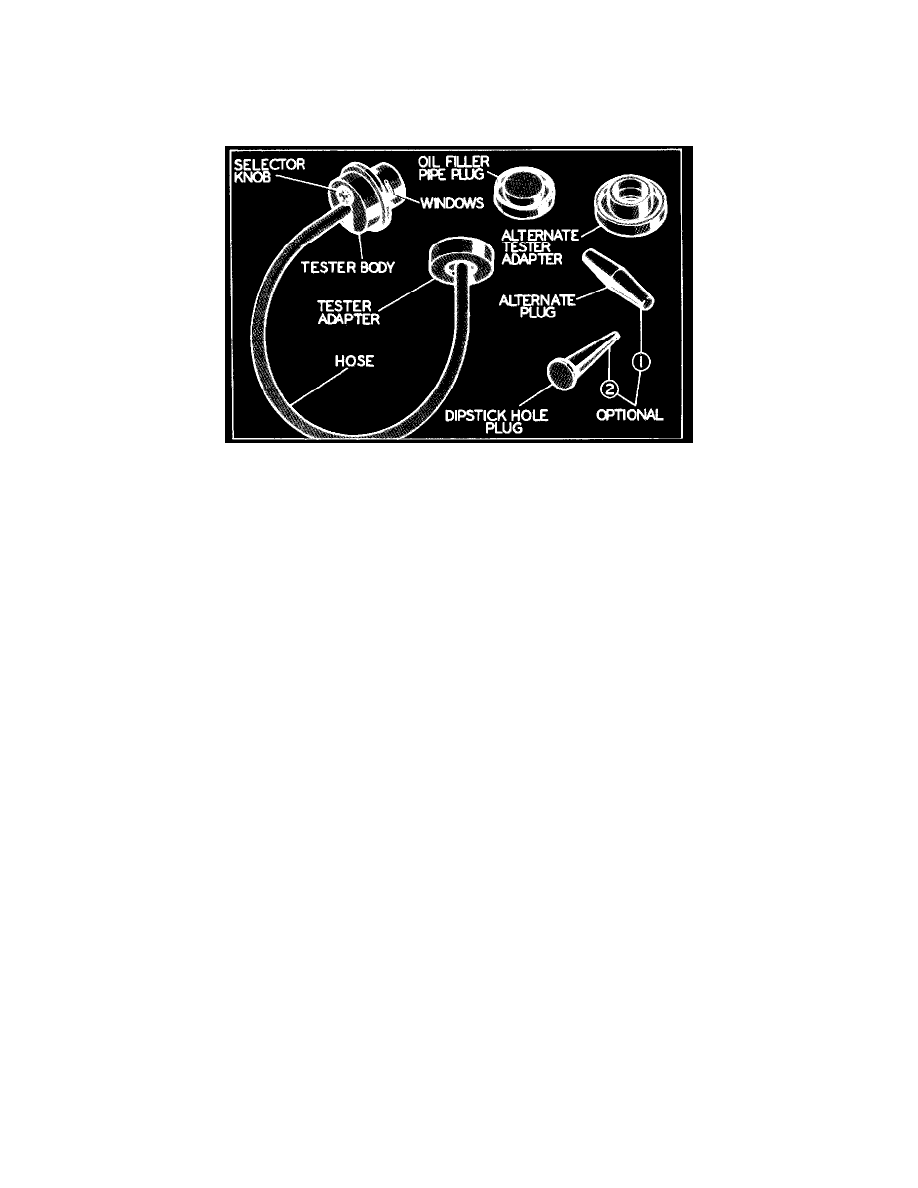Firebird V8-305 5.0L (1982)

Positive Crankcase Ventilation: Testing and Inspection
PCV System Test
With Tester
Fig. 45 A/C Positive Crankcase Ventilation System Tester
System Air Intake & PCV Valve
NOTE: This test uses the AC positive crankcase ventilation tester--Fig 45--which is operated by the engine vacuum through the oil filler opening.
1. With engine at normal operating temperature, remove oil filler cap and dipstick.
2. Connect one end of the hose to the tester body and connect the other end of the hose to the tester adapter.
3. Use the dipstick hole plug to plug the opening in the dipstick tube.
4. Insert the tester adapter in the filler cap opening and turn the selector knob to No. 2--Fig. 45.
5. If the vehicle has a system with the tube from the air cleaner going into the oil filler cap, disconnect the tube at the filler cap and plug the tube.
6. Start engine and let it idle.
7. With plugs secure and tube free of kinks, hold tester body upright and note color in the tester windows. Following lists the various colors and
probable cause or related condition of the system.
Green: System operating properly.
Green & Yellow
1. PCV valve or system partially plugged.
2. Slight kink in tester hose.
3. Slight engine blow-by.
4. Plugs from kit or engine vacuum lines are not properly sealed.
5. Tester knob improperly set.
Yellow
1. PCV valve or system partially plugged.
2. Tester hose kinked or blocked.
3. Blow-by at maximum capacity of PCV valve.
4. Plugs from kit or engine vacuum lines are not properly sealed.
5. Tester knob improperly set.
Yellow & Red
1. PCV valve or system partially or fully plugged.
2. More engine blow-by than PCV valve can handle.
3. Vent hose plugged or collapsed.
Red
1. PCV valve or system fully plugged or stuck.
2. Vent hose plugged or collapsed.
3. Extreme blow-by.
